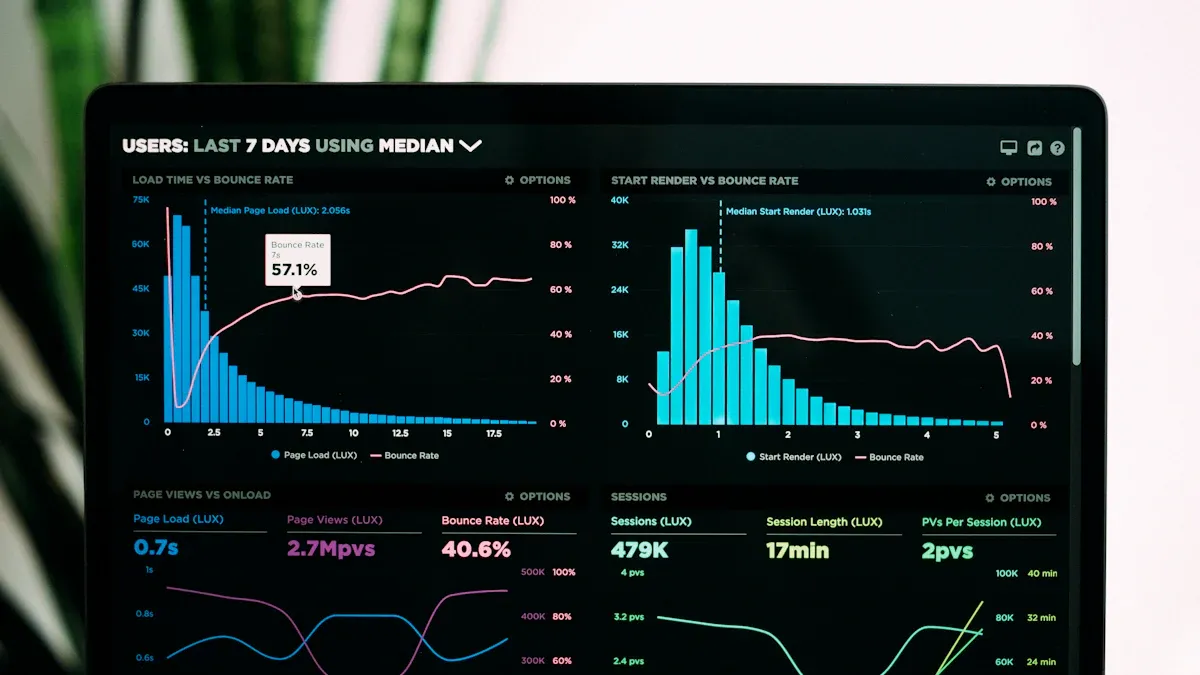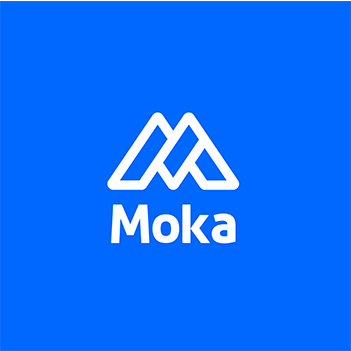The Most Critical Recruitment Metrics HR Teams Should Monitor

Recruitment metrics are essential for refining hiring processes and achieving better results. Tracking the most important recruitment metrics every HR team should track ensures data-driven decisions that improve efficiency and candidate satisfaction. For example:
Providing thoughtful feedback can quadruple a candidate’s interest in your company.
Time to fill reveals how quickly you hire, while first-year attrition rates measure retention success.
By focusing on these key performance indicators, you can optimize hiring strategies and enhance outcomes.
Key Takeaways
Measure how long it takes to fill jobs. Faster hiring saves money and makes candidates happier.
Check if new hires match company needs. Good workers help the company do better.
Watch how candidates feel during hiring. Happy candidates accept offers more and like your company more.
Time- and Cost-Based Metrics
Time to Fill
Time to fill measures the number of days it takes to fill a vacant position, starting from the job posting to the candidate's acceptance. This metric helps you understand how quickly your recruitment process operates. On average, it takes 42 days to fill a position, though this varies by industry. For example, industries like hospitality and cleaning services average just 14 days, while energy and defense take up to 67 days.
Industry | Average Time to Fill (Days) |
|---|---|
Energy & Defense | 67 |
Cleaning Services | 14 |
IT | 41 |
Hospitality | 14 |
Shorter time-to-fill metrics improve hiring manager productivity and reduce the cost of vacancy. Companies that hire within 24 hours often secure top talent faster, avoiding opportunity costs.
Time to Hire
Time to hire focuses on the duration between a candidate entering the pipeline and accepting the offer. This metric reflects the efficiency of your selection process. For instance, industries like construction average 12.7 working days, while healthcare takes 49 days.
Streamlining this process ensures you don’t lose qualified candidates to competitors. Faster time-to-hire also enhances the candidate experience, making your organization more attractive.
Cost per Hire
Cost per hire calculates the total expenses involved in recruiting a new employee. This includes advertising, recruiter salaries, and onboarding costs. Efficient recruitment processes reduce time to fill, which directly lowers hiring costs. Metrics like Cost-Per-Quality-Applicant (CPQA) and Cost-Per-Hire (CPH) help you evaluate financial impacts and improve strategies.
Companies with strong recruiting capabilities achieve 3.5 times the revenue growth and double the profit margins compared to their peers. This highlights the importance of balancing cost efficiency with hiring quality.
Candidate Quality and Pipeline Metrics

Quality of Hire
Quality of hire measures the value a new employee brings to your organization. It evaluates their performance, engagement, and retention. This metric helps you understand how well your hiring decisions align with business goals.
A report revealed that every low-quality hire was rated highly by at least one interviewer. This suggests a need to recalibrate assessment criteria or provide training on candidate evaluation.
To improve this metric, focus on:
Identifying sources that consistently yield low-quality hires and recalibrating your approach.
Using automated insights from quality-of-hire data to guide talent acquisition strategies.
Aspect | Description |
|---|---|
Definition | Quality of hire is a key recruiting metric that represents the value a new hire adds to a company. |
Organizational Success | Effective hiring practices correlate with long-term business outcomes. |
Measurement Metrics | Job performance, employee engagement, and retention rates are used to assess quality of hire. |
A high performer can be nearly 400% more productive than an average employee. This highlights the importance of hiring decisions on overall productivity.
Source of Hire
Source of hire identifies where your best candidates come from. It helps you allocate resources to the most effective channels.
Source of Hire | Percentage of Hires |
|---|---|
Referrals | 40% |
Job Boards | 30% |
Direct Sourcing | 24% |
Career Fairs | 6% |
To track this metric, use surveys to ask candidates how they found your job posting. Leverage your Applicant Tracking System (ATS) to monitor candidate sources. Web analytics can also provide insights into engagement across channels.
Offer Acceptance Rate
Offer acceptance rate measures the percentage of candidates who accept your job offers. A high rate indicates alignment between your company and candidates' expectations.
Acceptance Rate | Implication |
|---|---|
Above 90% | Good fit between company and candidates' expectations |
Below 90% | Potential issues that need to be addressed |
If your rate falls below 90%, investigate potential issues. These could include misaligned salary expectations, unclear job descriptions, or a poor candidate experience. Addressing these factors can improve your acceptance rate and ensure you secure top talent.
Candidate Experience and Engagement Metrics

Application Completion Rate
Application completion rate measures the percentage of candidates who finish your application process. A high rate indicates that your process is user-friendly and engaging. Factors like application length, design, and technical issues can significantly impact this metric.
Factor | Impact on Completion Rate |
|---|---|
Complexity of the application | More complex applications lead to lower completion rates. |
User interface design | An intuitive design enhances user experience and encourages completion. |
Application length | Shorter applications tend to have higher completion rates. |
Loading times and technical issues | Glitches can deter applicants from finishing. |
Mobile optimization | Non-optimized applications for mobile can lower completion rates. |
Personalization | Tailored experiences can increase engagement and completion. |
Simplifying your application process can boost completion rates. For example, a study revealed that 92% of candidates who clicked "Apply" abandoned the process due to its complexity. Streamlining forms and optimizing for mobile devices can help you retain more applicants.
Candidate Experience
Candidate experience reflects how applicants perceive your hiring process. A positive experience can influence their decision to accept an offer. Research shows that 66% of candidates accepted a job because of a good experience, while 78% believed it reflected how a company values its employees.
Statistic | Insight |
|---|---|
66% of candidates | A positive experience influenced their decision to accept a job offer. |
Their overall candidate experience indicates how a company values its employees. | |
80-90% of talent | A positive or negative candidate experience can change their minds about a role or company. |
To improve this metric, focus on clear communication, timely feedback, and engaging assessments. For instance, PwC used a business simulation game to increase candidate engagement time from 10 minutes to 90 minutes. These efforts show candidates that you value their time and effort.
Candidate Drop-Off Rate
Candidate drop-off rate measures the percentage of applicants who start but do not complete your application process. High drop-off rates often signal issues like lengthy forms, poor user experience, or unclear instructions.
Application Time: Long forms discourage candidates, especially those with limited time.
Candidate Experience: A poor experience can deter applicants from completing the process.
Technical Issues: Glitches or slow loading times frustrate users and lead to drop-offs.
Streamlining your process can reduce drop-off rates. For example, companies using data-driven strategies are 2.5 times more likely to improve hiring quality. By addressing these issues, you can create a smoother application journey and attract top talent.
Return on Investment Metrics
Sourcing Channel Effectiveness
Understanding which sourcing channels deliver the best candidates is essential for optimizing your recruitment strategy. Channels like job boards, social media, and employee referrals can vary in effectiveness. You can measure this by dividing the number of hires from a channel by the total applications it generates. This calculation helps you identify which channels provide the highest return on investment.
For example:
Job boards may bring in a large volume of candidates, but their quality might be lower.
Employee referrals often yield high-quality hires, as they come with a built-in recommendation.
Tracking candidate quality by channel ensures you focus on sources that consistently produce top talent. Using analytics tools, you can also assess engagement data to refine your approach. This data-driven insight allows you to allocate resources effectively and reduce recruitment costs.
Recruitment Funnel Effectiveness
The recruitment funnel represents every stage of your hiring process, from sourcing to onboarding. Evaluating its effectiveness helps you identify bottlenecks and improve efficiency. Metrics like cost per qualified applicant, source-specific conversion rates, and time-to-fill efficiency provide valuable insights.
For instance, analyzing lead-sourcing data can reveal adjustments needed to attract better candidates. Monitoring time-to-hire metrics ensures your process moves quickly, preventing the loss of top talent. A staffing company once improved its recruitment ROI by using analytics to track funnel performance. This resulted in a 505% increase in applicants and $1.2 million in cost savings with only a 20% increase in investment.
First-Year Attrition Rate
First-year attrition rate measures the percentage of new hires who leave within their first year. High attrition rates often indicate problems with hiring practices, onboarding, or cultural fit. This metric highlights areas where improvements are needed to retain employees and reduce wasted resources.
For example, if many new hires leave due to poor onboarding, you can invest in tools that enhance the onboarding experience. Data analysis can also help identify patterns in attrition, such as specific roles or departments with higher turnover. Addressing these issues ensures your recruitment efforts lead to long-term success.
Recruitment metrics give you the tools to refine hiring strategies and achieve better results. By focusing on time, cost, quality, and engagement metrics, you can identify inefficiencies and improve outcomes. A data-driven approach ensures long-term success by aligning hiring practices with organizational goals.
Benefit | Description |
|---|---|
Improved Employee Retention | |
Increased Workforce Productivity | Hiring individuals who thrive in their roles leads to a more engaged and productive workforce. |
Enhanced Organizational Effectiveness | A data-driven approach aligns hiring with company goals, fostering a stronger organizational culture. |
Incorporating these strategies is not just an HR improvement; it builds stronger teams that contribute to your company’s long-term goals. Tracking the most important recruitment metrics every HR team should track will help you create a more effective and efficient hiring process.
FAQ
What is the most important recruitment metric to track?
The most critical metric depends on your goals. For efficiency, track time-to-fill. To improve quality, focus on quality-of-hire. Align metrics with your hiring objectives.
How can you improve your offer acceptance rate?
Ensure job descriptions are clear. Align salary and benefits with market standards. Provide a positive candidate experience by communicating promptly and addressing concerns during the hiring process.
Why is candidate experience important in recruitment?
A positive candidate experience attracts top talent and strengthens your employer brand. It also increases the likelihood of offer acceptance and builds goodwill, even with unsuccessful candidates.
See Also
Enhance Your Hiring Choices Using MokaHR's Recruitment Tools
Unlock Recruitment Opportunities Through MokaHR's Automation Solutions
The Role of Recruitment Systems in Improving Candidate Choices
Boost Your Hiring Process with MokaHR's Management System
Regional Recruitment Strategies: Harnessing Applicant Tracking System Benefits
From recruiting candidates to onboarding new team members, MokaHR gives your company everything you need to be great at hiring.
Subscribe for more information

